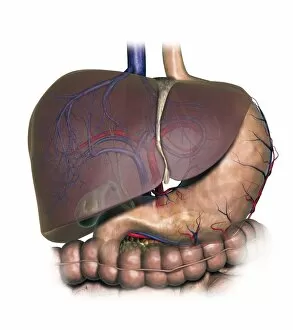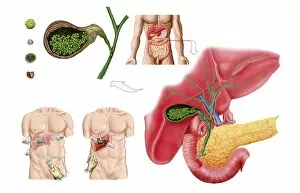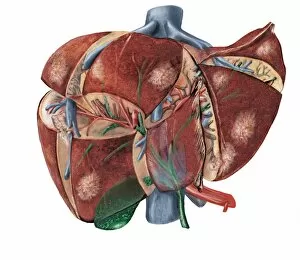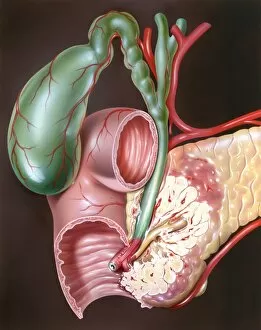Common Bile Duct Collection
The common bile duct is a vital component of the human digestive system, connecting various organs to ensure proper functioning
All Professionally Made to Order for Quick Shipping
The common bile duct is a vital component of the human digestive system, connecting various organs to ensure proper functioning. This cross-sectional biomedical illustration provides a detailed view of how it connects to the esophagus, allowing for the transportation of bile from the liver and gallbladder. In this diagram, we can observe the intricate relationship between the liver, stomach, gallbladder, and pancreas. The common bile duct plays a crucial role in facilitating communication between these organs and ensuring efficient digestion. Understanding the anatomy of the human abdominal vein system is essential in comprehending how nutrients are transported throughout our bodies. This illustration sheds light on this complex network and highlights how it interacts with the common bile duct. Cholecystectomy is depicted here as a surgical procedure aimed at removing an inflamed or diseased gallbladder. The common bile duct's involvement in this process emphasizes its significance in maintaining overall health. These conceptual images further emphasize just how integral the common bile duct is within our digestive system. They provide us with a visual representation that aids in understanding its functionality and importance. Gallstones inside the gall bladder can cause severe discomfort and complications if left untreated. These conceptual images serve as a reminder that proper care must be taken to prevent such issues from arising within this crucial organ. The anatomy of both human abdominal vein systems reinforces our knowledge about their interconnection with other vital components like the common bile duct. Understanding these relationships helps medical professionals diagnose potential problems accurately. Finally, we have an image depicting ganglion associated with gall bladder anatomy—an intriguing aspect that showcases yet another layer of complexity within our bodies' inner workings.















